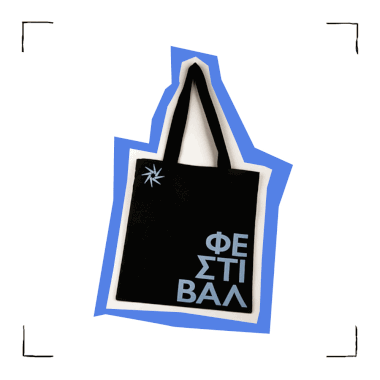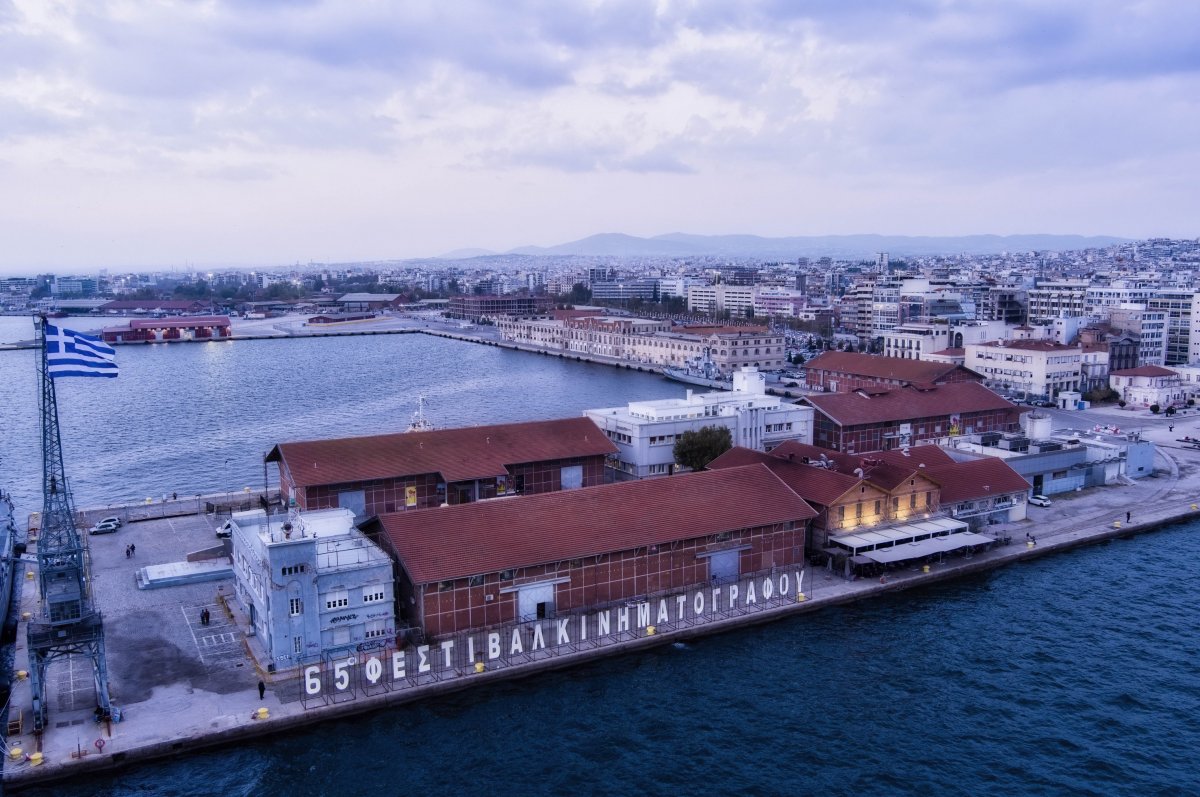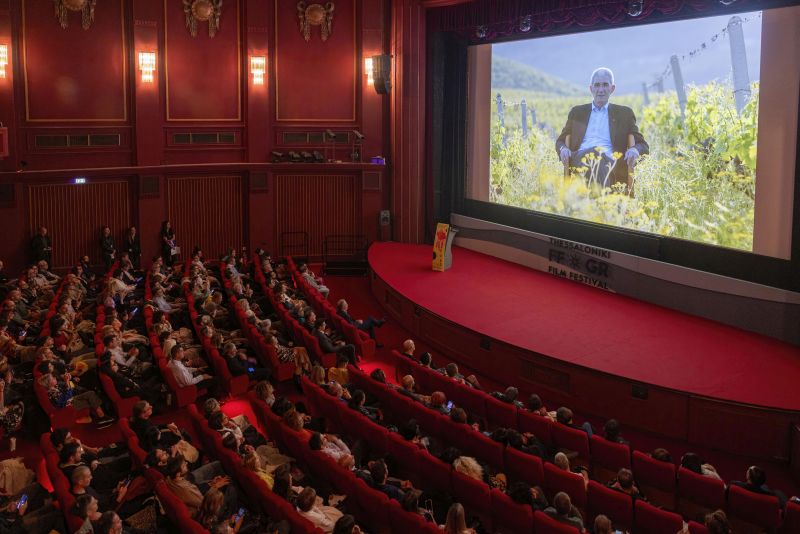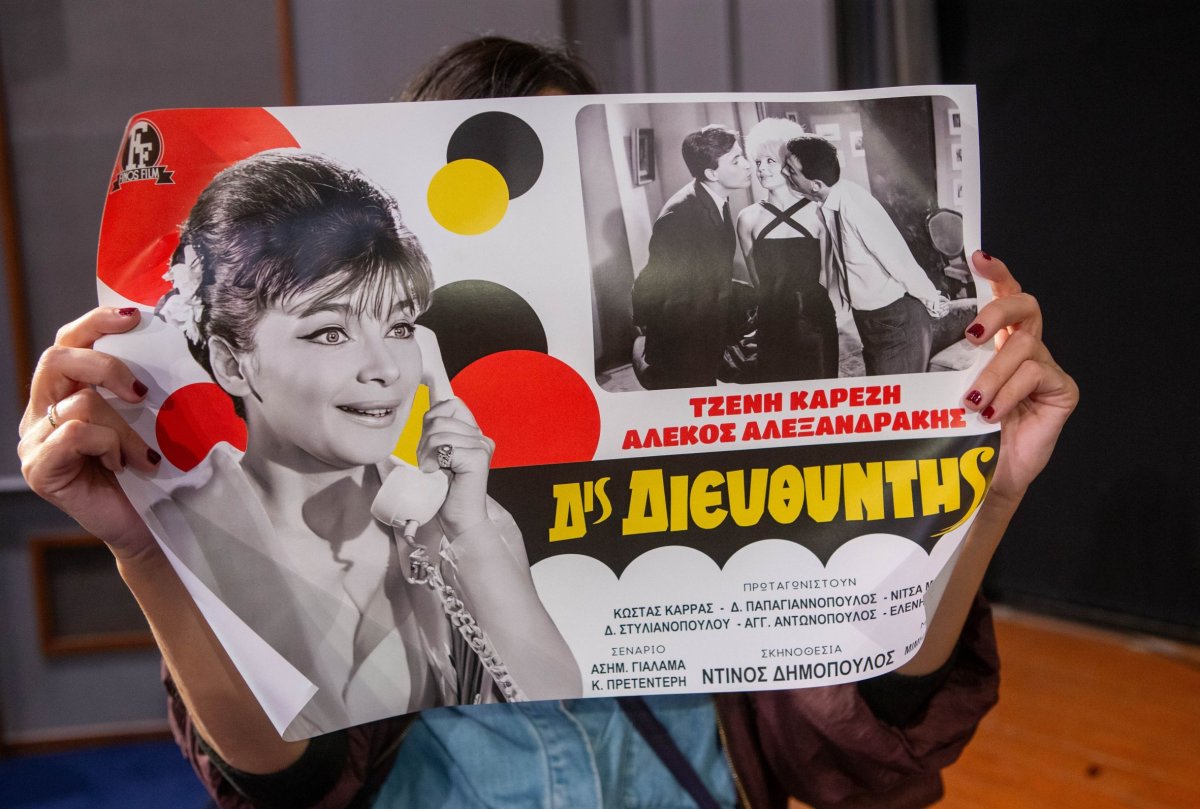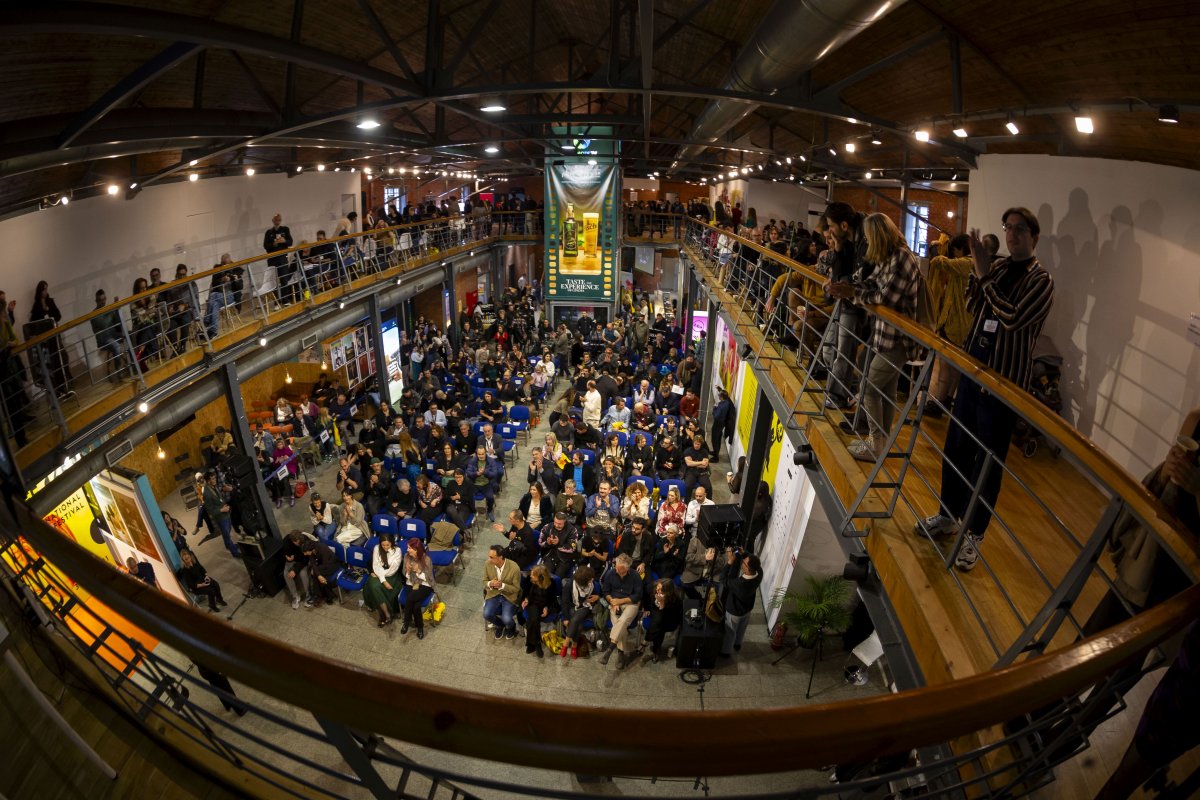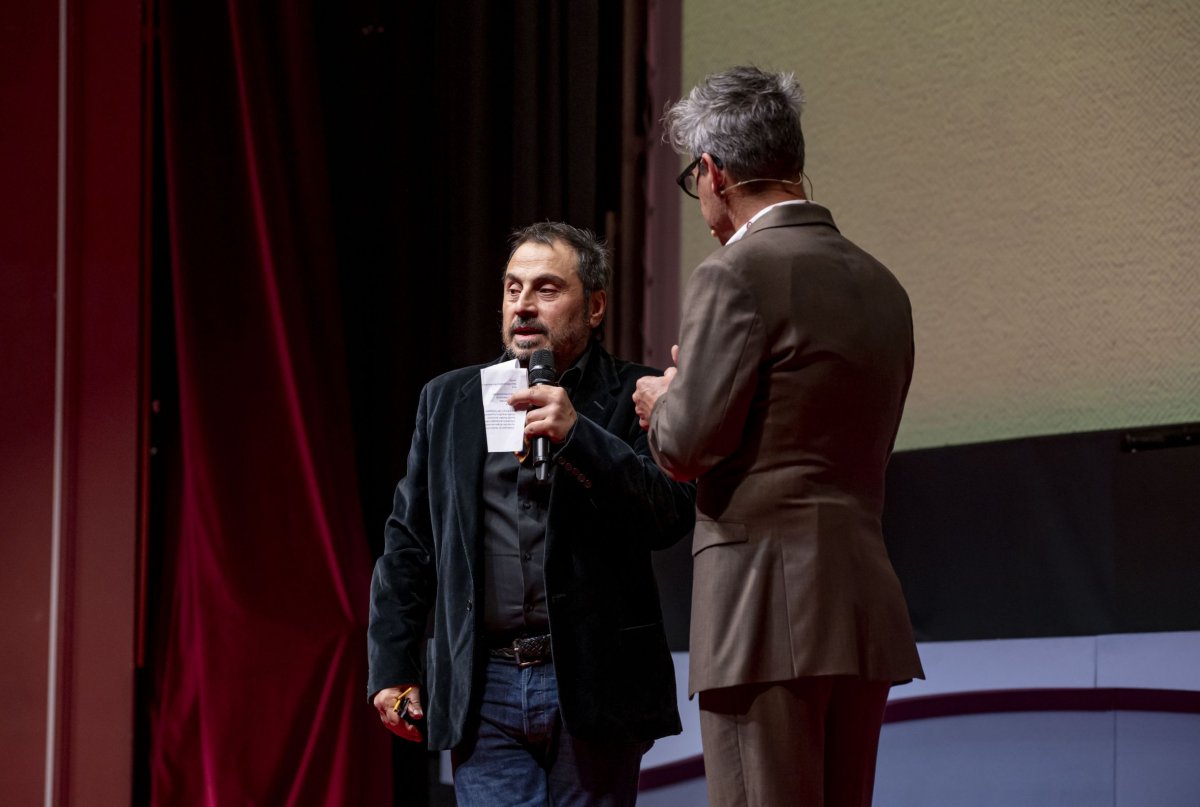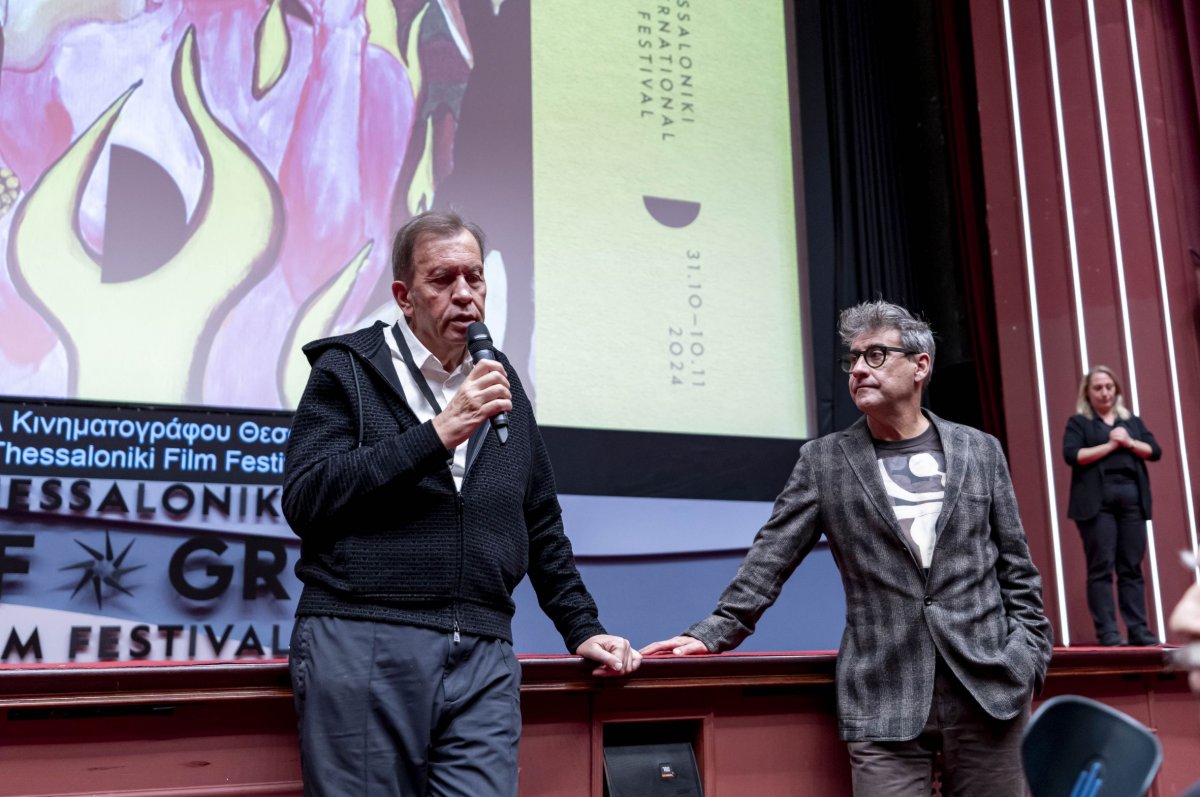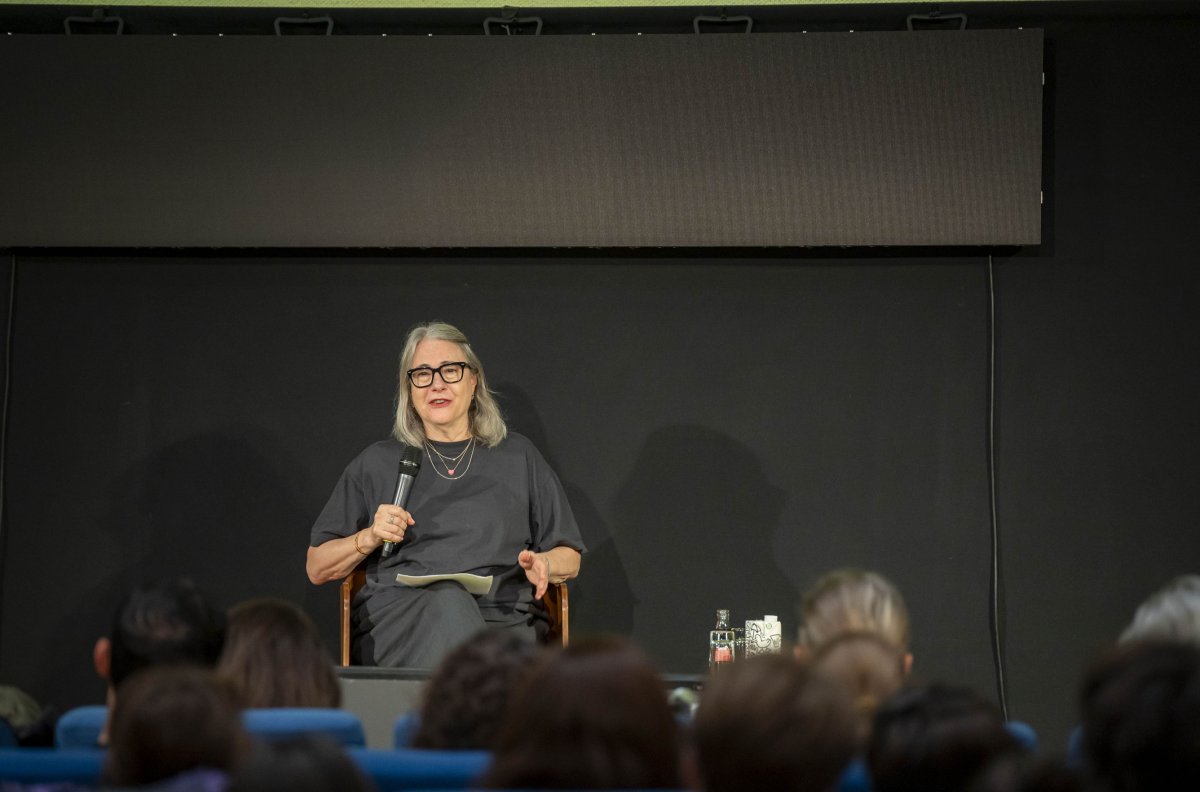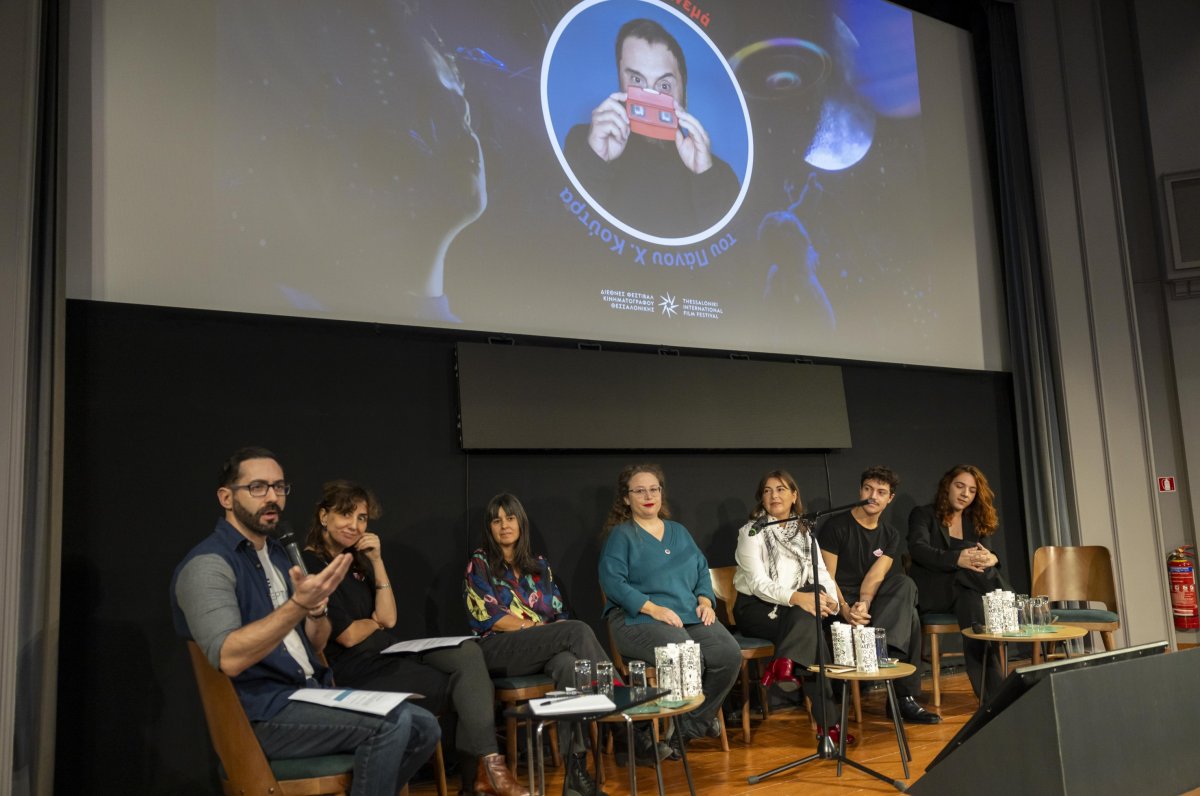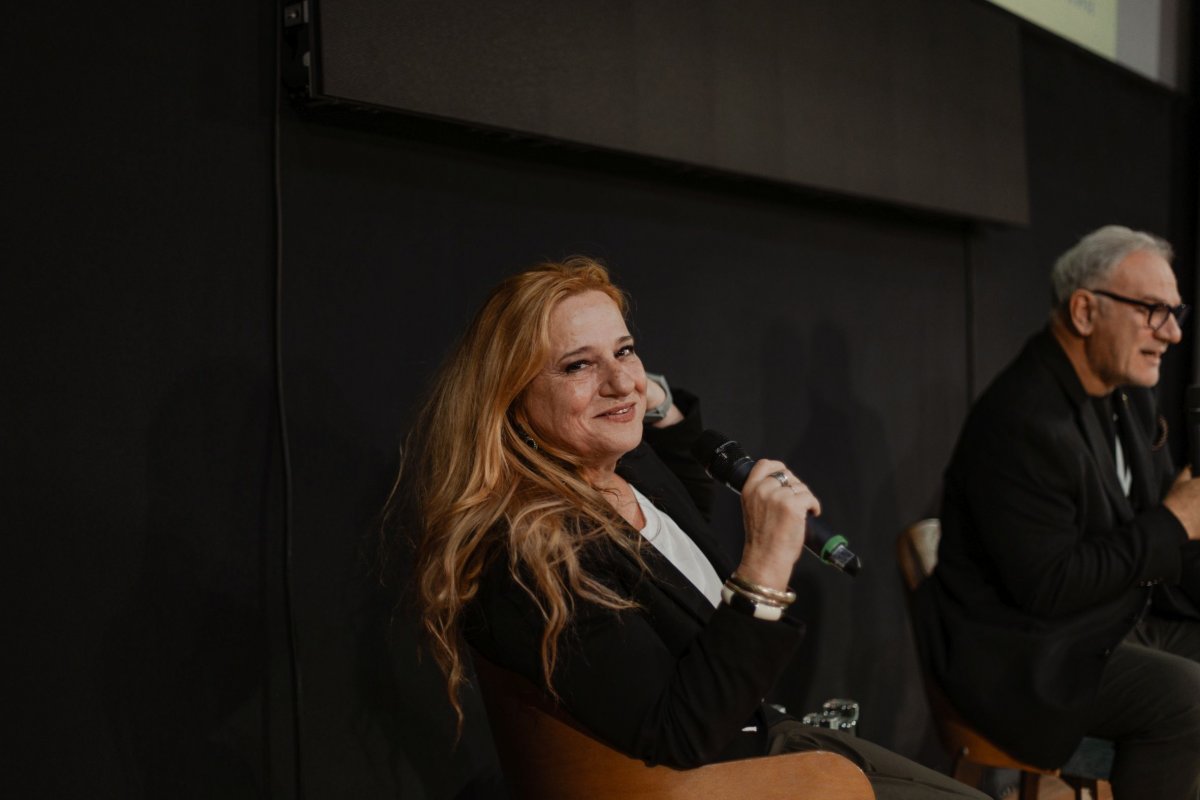JUST TALKING 21/3
The “Just Talking” section of the 15th Thessaloniki Documentary Festival continued on Thursday, March 21, 2013. Present were directors Eliana Abravanel (Roughcut), Laura Gamse (The Creators), Sourav Sarangi (Char... the No-Man’s Island), Kesang Tseten (Who Will Be a Gurkha) and Petr Lom (Back to the Square).
Laura Gamse began by introducing her film, The Creators. She noted: “It focuses on young artists from South Africa, a place that has been marked by racial discrimination. The art created by my protagonists is very interesting, as well as how the history of the country is expressed through it. This is what inspired me to make the documentary”.
Sourav Sarangi’s film Char... the No-Man’s Island takes place in another corner of the world. It tells the story of an adolescent and through him the story of an island between India and Bangladesh, which doesn’t belong to either country but is exactly on their natural border, the Ganges River. “Going there, I saw images which really impressed me. On this island were settled people who had lost their homes when the river had flooded in the past, and essentially from citizens they went to being immigrants”, the director explained.
Situated in Nepal, Kesang Tseten’s film Who Will Be a Gurkha is about the Gurkha brigade, a special unit of the British army for which the most aggressive young Nepalese are recruited. The director noted: «I set out to make a film about manliness and I had chosen four different environments where this predominates, among them the army. I finally realized that the Gurkhas had to be a separate film. I didn’t want to conduct interviews – I had been a journalist in the past – but to observe and discover”.
Taking her turn, Eliana Abravanel spoke about Bambie, the protagonist of her film Roughcut. “I met Bambie, a Philippina working as a hairdresser in Greece, completely by chance, going to the salon one day to get a haircut. In a way I didn’t choose her, but the reverse happened. At first I was impressed by her multifaceted personality, and every time I visited her I would discover something new. She would tell me her story and at first she thought I would use it for a fiction film. I let her believe that for a little while, and by the time I revealed that I would film her for a documentary we had became friends. Bambie supports her family in the Philippines, a very common thing there, while under her appearance as an attractive woman a man is hiding, as she is a transvestite”.
Petr Lom started from a different place for his film Back to the Square. “I was preparing a film about the Nobel prize winner Mohamed ElBaradei, when the rebellion broke out in Egypt. He went there, I followed him and eventually I realized that I had to focus on people and the human rights abuses that were happening there. I stayed in Egypt for a year and the film was completed in 2013. I am happy that it is screening now at the 15th TDF, although I had hoped that what is shown in it would have been in the past by now”.
Laura Gamse had a similar experience of changing directions: “With financing from the university, I was going to make a film about art and social movements in South Africa: a rather boring subject. When I got there I came face-to-face with many different aspects of reality: You can be in the center of town, thinking that you’re in London, and after a ten minute car ride see a baby dying. There is a great deal of discrimination and many contrasts, and I felt that the ideal means for me to deal with the subject would be via the artists”.
On his side, Sourav Sarangi commented: “It is very natural to change direction. If you know from the beginning what you want to do and have put it all down exactly the way you want it, you will get a training film. The creative documentary means transformation – metamorphosis. One idea can change the entire film. You negotiate with yourself in the process until the object becomes clear first of all to you, and then to others. The absence of control is essential. If you know everything from the beginning, the film will be boring. This is about exploration, not teaching. The documentary is not an interview, but a discussion. Just as you don’t know where a conversation will take you, you don’t know where the documentary is going to end up”.
Continuing the discussion, the subject of whether should be a written script was raised, and the directors expressed various opinions. Mr. Lom observed that a written script is a prerequisite and a necessary evil for the purposes of financing, while Mr. Sarangi noted: “It is part of the process and it is needed in order for the director to show that he can tell a story. The script is a reference point, it is not what you will end up filming”.
Speaking about the unpredictability of the creative process, Ms Abravanel noted: “I filmed Bambie for three years, and new elements were constantly popping up. For example, she had told me she had worked in Japan as a dancer and singer, but that she didn’t have any photos of that time. But then, she remembered that there were some videos and a month later, when she sent them to us, dusty from the basement, it was like a treasure for me and I used parts of them. I think that whatever happens during the creation of a film is more fascinating than the final result”. Mr. Sarangi agreed: “surprises are the joy and pleasure of making a film”.
Speaking about the relationships between directors and their protagonists, the directors brought up various examples. Ms Gamse noted: “During shooting, the poor people would always invite me to their homes, we all ate together, we would sleep either at my house or their houses and ended up becoming friends. The rich ones kept their distance and didn’t want me to see their homes, because that would have looked bad in the film. In an attempt to make an approach, I asked them about the activism of their parents against Apartheid, because I thought that this would make them look better in the film, but they didn’t react well to that. They believed that I was trying to twist things around and didn’t want to talk about it, would become angry and end up speaking about the exact opposite, which is that the whites deserved the land they had taken from the South Africans. In the end I kept some of these scenes and cut out others”.
Sourav Sarangi added to the same subject: “there are always political relationships between the two sides. To film is to intervene, and the presence of the camera is participation. In another film of mine, the protagonist is a child with blind parents. I was very conflicted inside about how to film blind people, even though they didn’t have any problem. In the end I told them that when they heard or smelled that I was there – because they had a very sensitive sense of smell – they should assume that the camera was also there, that I was the camera”. Prompted by Mr. Sarangi’s story, Mr. Tseten commented on the subject of ethics: “Everyone has to deal with ethical questions in his work. However, the director has the power to control what the result of his work will be”.
The films are part of the 15th TDF program, which is financed by the European Union’s Regional Development Fund for Central Macedonia, 2007-2013.



